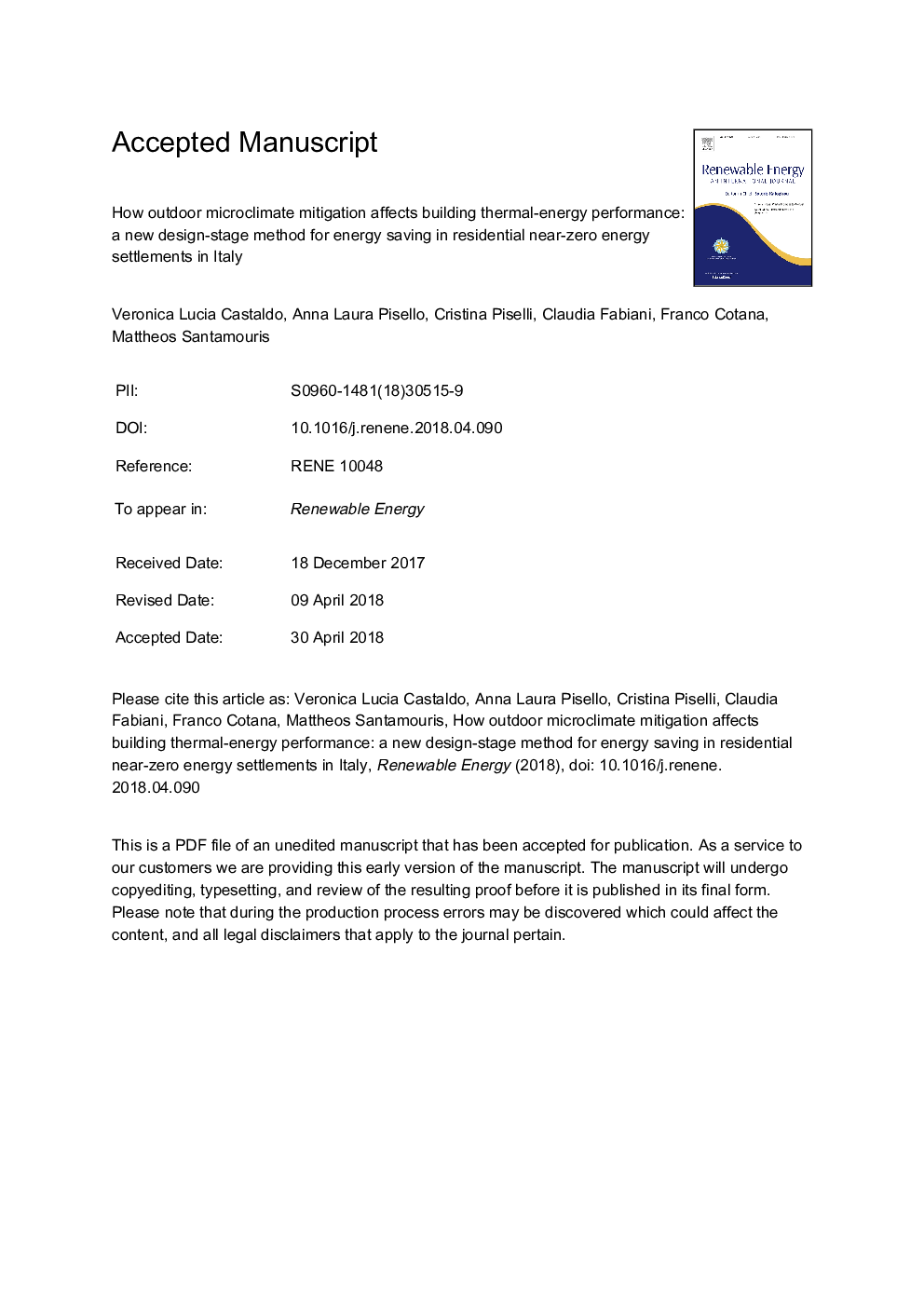| Article ID | Journal | Published Year | Pages | File Type |
|---|---|---|---|---|
| 6764179 | Renewable Energy | 2018 | 40 Pages |
Abstract
Key research effort was dedicated toward zero-energy buildings. Recent interest is switching from single-building to inter-building scale, to enhance the whole district economic-environmental sustainability. This upscaling opens the doors to further optimization strategies thanks to outdoor microclimate mitigation aimed at reducing winter thermal losses and summer overheating. This work proposes a novel design-stage replicable method for multiscale microclimate improvement correlated to building thermal-energy analysis in a residential near-zero-energy district in central Italy. Cool surface installation and conscious greenery design in the outdoors were used in the district of single-family houses. Therefore, a microclimate simulation was performed to elaborate realistic weather files to be used in the second-stage dynamic thermal-energy simulation at building level, in order to evaluate the impact of the local microclimate on building thermal-energy performance and renewables' production. Microclimate analysis demonstrated how local conditions affect outdoor comfort and that they may be considered in the same way as traditional energy-efficiency improvement early-stage design strategies at building scale, being able to reduce building energy need for HVAC up to 10% in the studied conditions. Therefore, new potentialities of inter-building scale analyses for energy efficiency enhancement and renewable energy exploitation are expected while downscaling microclimate assessment toward building thermal-energy performance.
Related Topics
Physical Sciences and Engineering
Energy
Renewable Energy, Sustainability and the Environment
Authors
Veronica Lucia Castaldo, Anna Laura Pisello, Cristina Piselli, Claudia Fabiani, Franco Cotana, Mattheos Santamouris,
